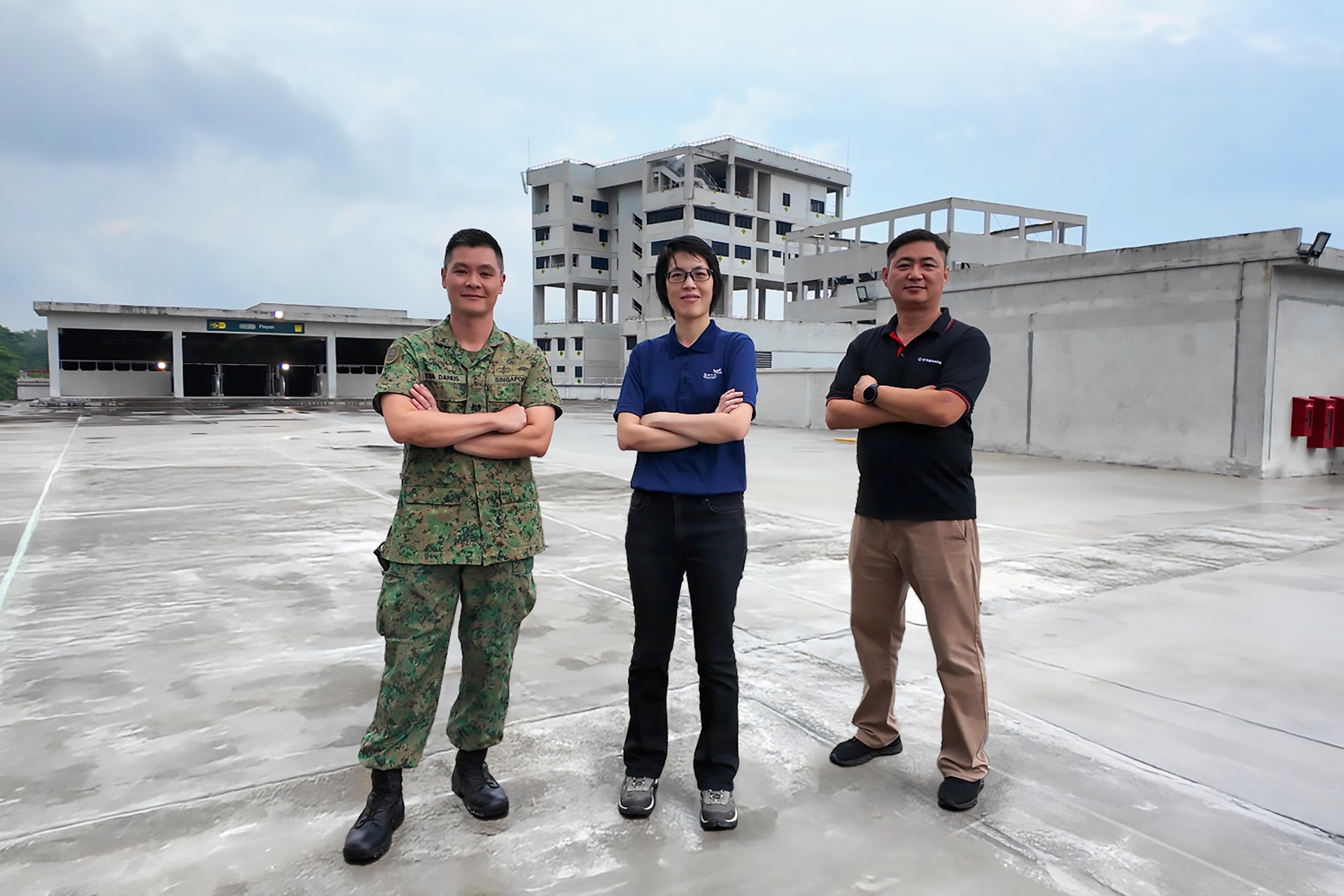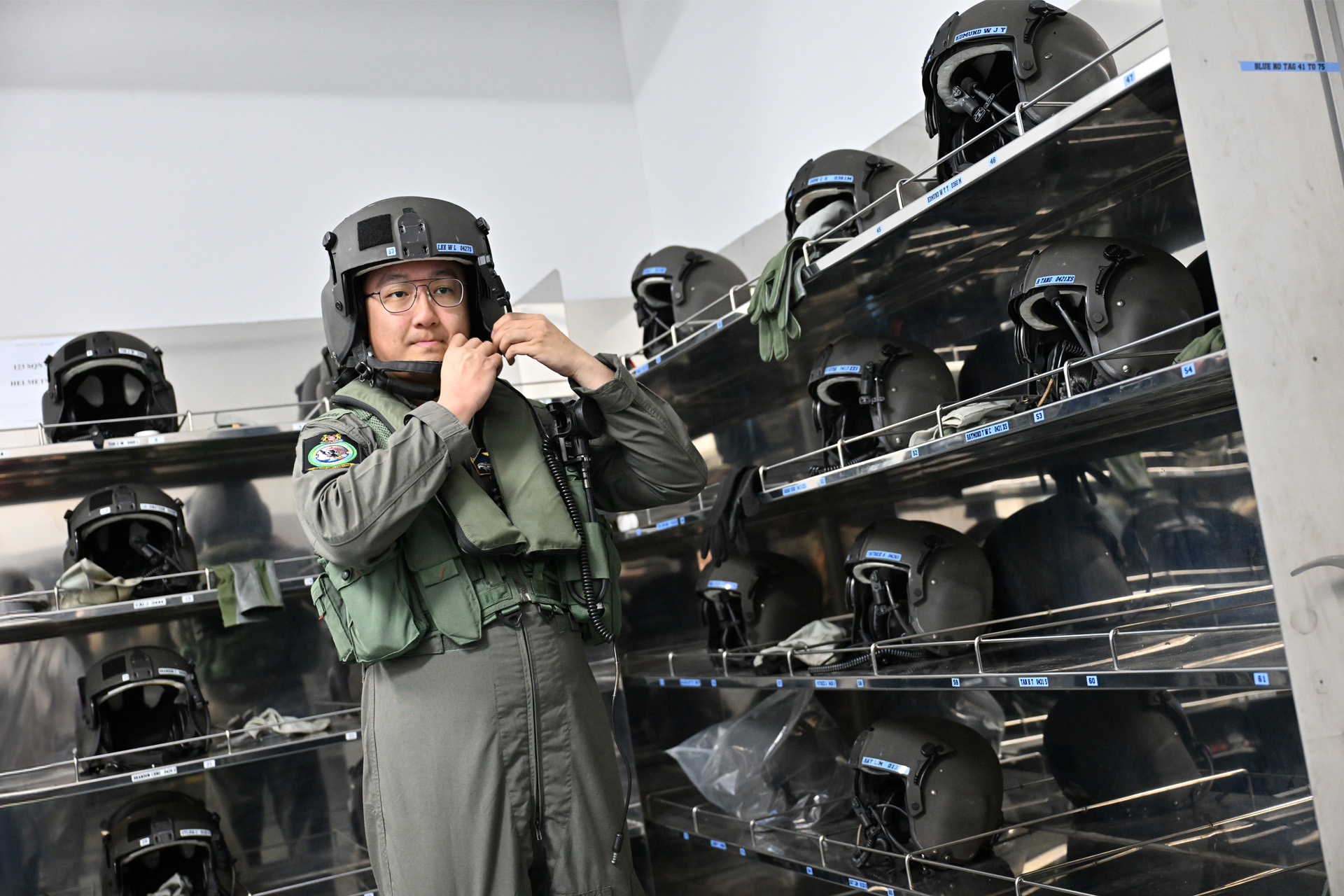As the Republic of Singapore Navy (RSN) prepares itself for future challenges and capabilities, it has not forgotten its roots.
There is an old Chinese saying "????,????", which translates to "forefathers plant trees so their descendants can enjoy the shade". And following the good example of its forefathers, the RSN has not been content with resting in the shade, but is making sure that generations to come will continue to be protected from the sun.
As Chief of Navy Rear-Admiral (RADM) Ng Chee Peng said at the RSN Workplan Seminar on 25 Mar: "As we continue apace in the new work year, we must cast our minds forward and start seeding developments beyond the 3rd Generation RSN, towards RSN 2030."
Looking a decade-and-a-half into the future shows foresight, and indeed, with the ever-evolving threats to maritime security (MARSEC), machines and systems must be constantly renewed and people continuously trained.
However, preparing for the new does not mean discarding the old; sitting under the trees of our forefathers that are still standing tall today, there is still much value in their knowledge. And this is the RSN's plan to move towards 2030: to take care of the planters, to nurture the trees, and to keep planting.
Care for the care-givers
A forest is nothing without the planters that care for it. Appreciating this, the RSN places much emphasis on developing its people. And with about 70 percent of all uniformed naval personnel moving over to the Military Domain Experts Scheme (MDES) in 2010, the Navy has taken steps to strengthen the MDES identity and enhance the knowledge of its Military Experts (MEs).
RADM Ng emphasised that "in growing our capabilities, the RSN has, over the years, poured more and more of our limited resources into our 'fighting teeth'. Going forward, we must ensure that our organisational 'tail' in areas such as training, logistics and engineering, is able to keep up with our 'teeth' of operations and capability development".
Hence, on top of establishing the Naval Military Expert Institute as the spiritual home of the MEs, the RSN is reviewing the curriculum across the ME rank continuum to ensure that their skills and knowledge remain relevant to the present and future needs of the Navy.
Enhancements include a tighter coupling of operations doctrines and training curriculum, the use of more advanced shore simulators, more industrial training opportunities, and a closer partnership with institutes of higher learning.
For example, the RSN-IMarEST Streamlined Accreditation Programme was recently introduced, allowing RSN personnel, such as engineers, naval officers and divers, to obtain professional accreditation from the Institute of Marine Engineering, Science and Technology (IMarEST).
On the motivations behind offering this accreditation, ME7 Keith Lim, Head Operations Logistics Group, said, "We believe we can give them (the servicemen and women) a sense of security by having ourselves benchmarked against the industry. It provides assurance that what we do is both relevant and highly regarded, and that the organisation is willing to develop its people." ME7 Lim helped to spearhead the programme in 2010.
Applicants must meet certain criteria, such as having held particular appointments that demonstrate their competencies and experience, as well as submit a portfolio documenting their job exposure in the related fields, and sit for an interview.
For instance, ME5 Jackson Ng, who is in the process of obtaining his accreditation, has spent his 11 years in the Navy building up his experience in the area of engineering.
To date, he has taken on roles such as Senior Combat Systems Engineer on board frigate RSS Formidable, as well as Senior Engineer in Sensors Systems Branch, Naval Logistics Department. Currently Commanding Officer, Sensor Systems School, he is in charge of the operations and technical training for three vocation specialisations - Navigation Systems, Communications Systems, and Electronic Warfare Systems.
ME5 Ng described his experience: "In drafting my work portfolio, it reinforced my belief that my career with the Navy has provided me with ample opportunities and wide exposure to practise and hone my engineering knowledge, as well as develop my engineering management and leadership skills.
"With such accreditation, our MEs will be even more well-regarded by the industry and foreign military professionals, thereby enhancing the branding of our people and our Navy."
Nurturing the trees
With 40 years of MARSEC experience spanning three generations, the RSN has grown astute in identifying and preserving systems that work well. Recently, the Navy announced that it would be growing its current fleet of Sikorsky S-70B Seahawk naval helicopters (NHs). Come 2017, two new Seahawk NHs will be joining the six to operate on the Formidable-class frigates.
The NHs have been serving the Navy well since they were integrated with the frigates in 2010. In the area of counter-piracy efforts, the helicopters have proved themselves effective in a wide range of missions.
In March, an S-70B NH was deployed together with RSS Tenacious as the 151-member Singapore Armed Forces (SAF) task group embarked on a three-month-long deployment to the Gulf of Aden (GoA) as part of international counter-piracy efforts in the region. This marked the second time the S-70B NH had been deployed to the GoA since it achieved full operational capability in 2012, the same year it was first deployed.
Elaborating on how the S-70B NH complements the capabilities of the frigate, Lieutenant Colonel (LTC) Chew Chun Liang said: "In Anti-Surface Warfare, it extends the frigate's surveillance capability, allowing us to rapidly complete our OODA (observe, orient, decide, act) loop; in Anti-Submarine Warfare, with its ability to detect, track and engage sub-surface contacts, the NH enables us to very effectively and efficiently prosecute submarine threats."
Currently Head, Navy Information Centre, LTC Chew was the Executive Officer (XO) of frigate RSS Stalwart when it was deployed to San Diego to carry out nascent integration training with the S-70B NHs in 2009.
Growing the forest
To ensure that our descendants will always have safe shade to return to, the RSN is also constantly looking to upgrade and improve on existing weaponry.
On top of increasing the fleet size, new platforms will be introduced: Type 218SG submarines and Littoral Mission Vessels (LMVs). While the two new Type 218SG submarines will be operationalised alongside the RSN's two Archer-class submarines, the eight LMVs are set to replace the Navy's Fearless-class patrol vessels (PVs).
Although construction of the LMVs is still in its early days, plans are already under way to devise a training programme for operating the ships. LTC Francis Goh, Head of Training Plans and Systems Development Branch at the Naval Training Department, is part of the working group that is developing this training programme.
He said that the LMV will be bigger than its predecessor, although it will run on a slightly smaller crew-size of up to 30. While its primary function is to carry out MARSEC operations, its highly configurable nature means it can be deployed to perform tasks above and beyond MARSEC.
Using a concept known as "mission modularity", the LMV can be configured for different missions with a variety of parts and capabilities that can be fitted on or removed to suit specific mission needs. Thus the crew working on board the LMV must also be trained in rigging up and operating these parts and capabilities.
Training - our forefathers' way
To prepare the pioneer crews to take on this new platform, a working group to develop the training support plan for operating the LMVs has come together to devise a training model. They are looking at using existing modes of training as the backbone of the new training plan.
LTC Goh explained that the model would entail sending the pioneer crews and instructors for external courses from the original equipment manufacturers (OEMs) before designing training packages to pass the knowledge on to the rest of their squadron.
This training model may be familiar to servicemen and women who had served as pioneer crews on new platforms. One such person is ME3 Ramesh K Gopalan. Currently a Marine Engineer on board RSS Intrepid, he was then a Leading Engineering Naval Specialist (now known as Chief Marine System) in the ship's pioneer crew. RSS Intrepid was one of the first two frigates that were introduced to the RSN in 2007.
ME3 Ramesh recalled the cross-continental travelling he had to do to learn from the manufacturers: "The frigate platform systems were from different parts of the world such as France and the United States. So we had to travel to various destinations to attend the courses."
Senior LTC (SLTC) Tan Wei Min, Commander Naval Officers' Advanced School, agreed, adding that upon their return, they had to develop team-level processes and procedures to transfer their knowledge to the rest of the crew. He was the first XO of RSS Formidable, the other pioneer frigate.
In the early days, teething problems were inevitable, and since both SLTC Tan and ME3 Ramesh had only had experience working on the smaller PVs, mine countermeasure vessels and missile gun boats, adapting to the new platform was not easy.
"For mechanical guys like me, we had to learn and understand PLC (programmable logic controller), which we didn't have to do on the smaller ships," ME3 Ramesh said of the experience.
"The size of the frigate was also a fear factor. We could easily get lost during our orientation week," he half-joked.
Fortunately, seasoned veterans were selected from across the RSN to take up key appointments on RSS Formidable to shorten the learning curve, added SLTC Tan. "Their vast operational experience and deep expertise allowed them to lead, anticipate future challenges and establish preliminary procedures and concepts - some of which were entirely new."
Improving upon the existing training model, the training programme for the LMVs would be developed concurrently with ship construction so that the crews can commence training on board the ships immediately upon their arrival. Said LTC Goh: "By the time they sail, they will be more confident and prepared, individually and as a team, before they sail out to sea."
With a strong infrastructure for the organisational "tail" and ever-growing support for the "fighting teeth", future generations will continue to enjoy the protection of the RSN.





